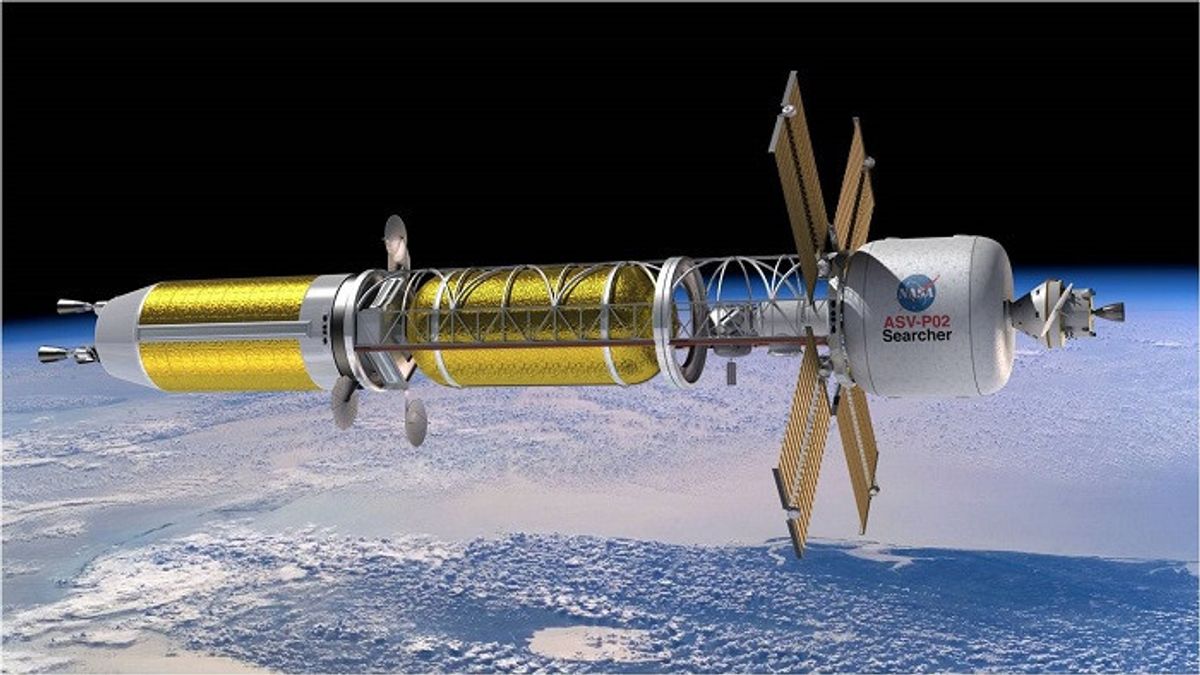JAKARTA - The National Aeronautics and Space Administration (NASA) has set a schedule to test nuclear-powered rockets that will fly astronauts to Mars in no time.
In this case, NASA is not alone, it is partnering with the United States (US) government's Defense Advanced Research Projects Agency (DARPA) to demonstrate the nuclear thermal rocket engine in space as early as 2027.
The main driver behind a nuclear thermal rocket is its advantage over traditional rockets in terms of overall speed.
According to NASA, Nuclear Thermal Rockets are usually faster than chemical rockets and will allow them to reach shorter transit times for future manned interplanetary missions. NASA believes the Nuclear Themal Rocket has the potential to be more efficient and safer than the current chemical rockets.
"Using a Nuclear Thermal Rocket allows for faster transit times, reducing the risk of astronauts. Reducing transit time is a key component for human missions to Mars, as longer travel requires more supplies and stronger systems," NASA said in its official statement.
In addition, using this Nuclear Termal Rocket makes the capacity of the science payload much higher, and higher power for instruments and communications.
NASA has previously successfully tested its new-era Artemis spacecraft last year as a stepping stone back to the Moon and to Mars.
They have hopes of landing the humans on the Red Planet around the 2030s as part of the Moon's program to Mars. Using current technology, NASA says, a 300 million miles journey to Mars will take about seven months.
However, NASA engineers don't know how much time it can cut using nuclear technology, but NASA administrator Bill Nelson said it would allow spacecraft, and humans to travel in space at high speed.
"With the help of this new technology, astronauts can travel to and from space much faster than ever, the main ability to prepare manned missions to Mars," Nelson said.
Quoted from The Guardian, Thursday, January 26, the nuclear electricity propulsion system uses propellants much more efficiently than chemical rockets but delivers low thrust. The reactor produces electricity that positively fills gas propellants such as xenon or krypton, pushing ions out through the booster, to push the spacecraft forward.
Using low thrust efficiently, the nuclear electric propulsion system accelerates spacecraft for a long time and can drive Mars' mission for a small proportion of high thrust system propellants.
"Darpa and NASA have a long history of collaboration that is useful in advancing technology for our respective purposes, from the Saturn V rocket that takes humans to the Moon for the first time to robotic service and satellite refueling," said DARPA director Dr Stefanie Tompkins.
Aerospace domains are essential to modern trade, scientific discovery, and national security. The ability to achieve rapid advances in space technology will be critical to the more efficient and fast transportation of materials to the moon and, in the end, humans to Mars," he added.
Interestingly, this isn't the first time NASA has worked on a Nuclear Thermal Rocket engine. The last time NASA has tested this type of engine was more than 50 years under the Nuclear Machines Agency project for Rocket Vehicle Applications and Rovers. However, the project was closed as NASA focused its resources on developing other important spacecraft, including Space Shuttles.
The English, Chinese, Japanese, Arabic, and French versions are automatically generated by the AI. So there may still be inaccuracies in translating, please always see Indonesian as our main language. (system supported by DigitalSiber.id)













